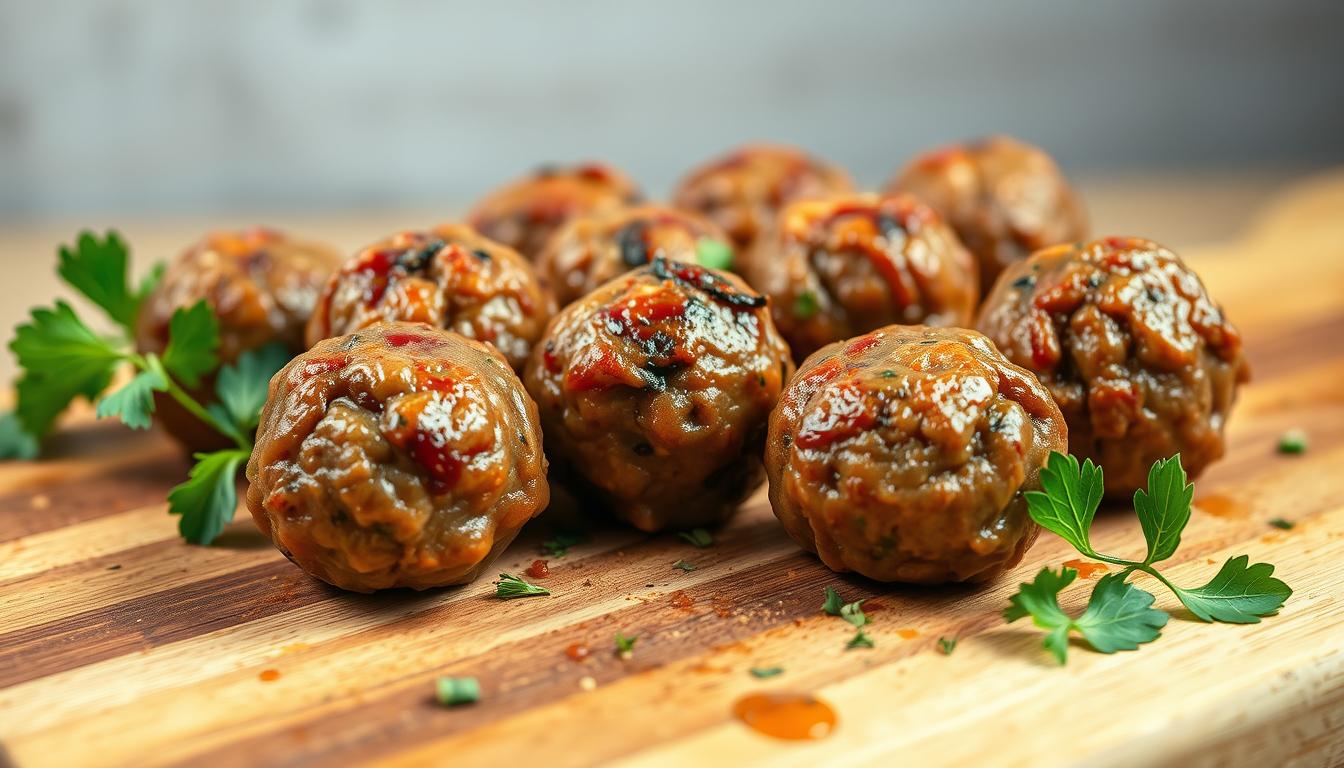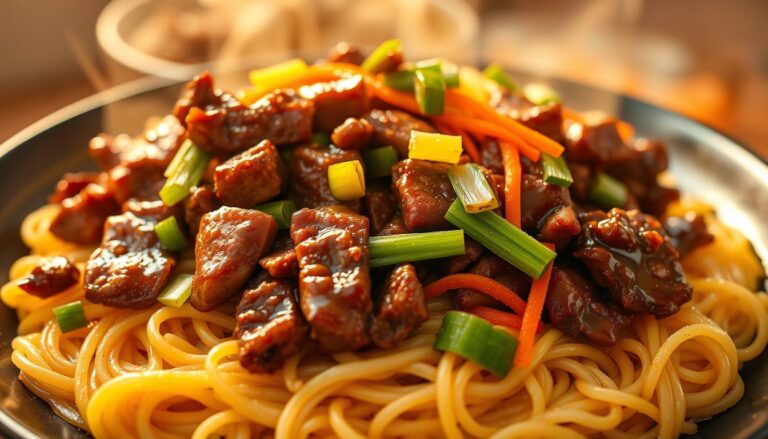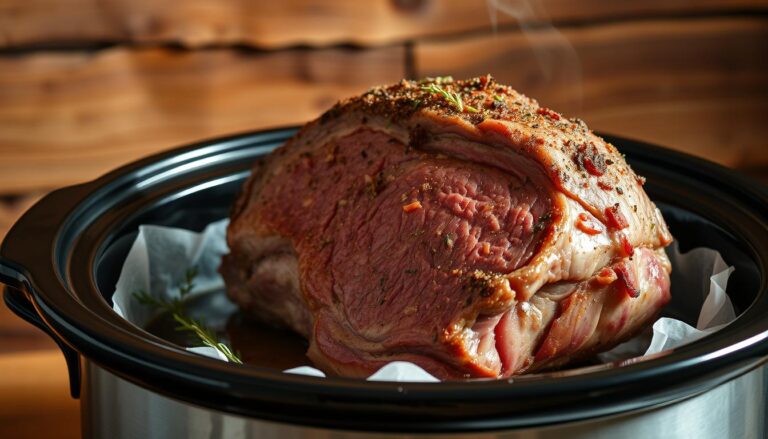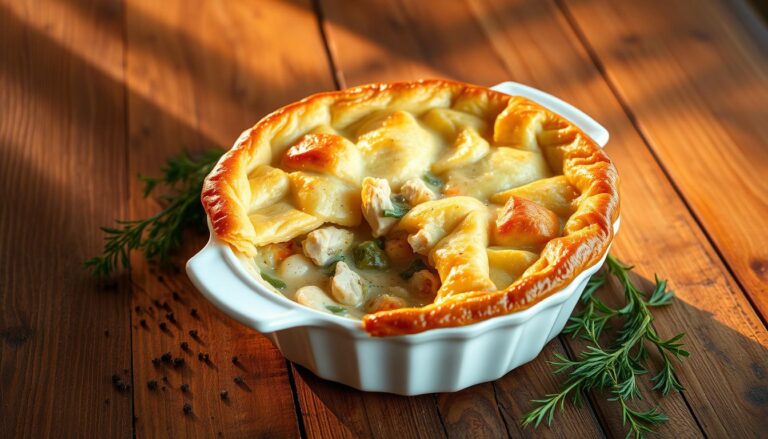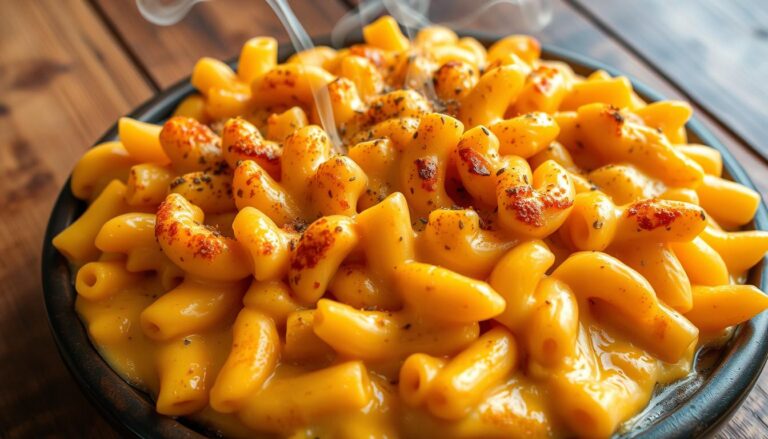How to Make Gluten Free Meatballs at Home
Table of Contents
Are you searching for a tasty dish that’s easy to make and fits gluten-free diets? Making gluten free meatballs at home is a fantastic choice. You get to pick the ingredients and make a meal that suits many tastes and diets.
You can pair your meatballs with many sauces, like marinara or Alfredo. This makes them great for any event. With a simple recipe, you can make gluten-free meatballs that are safe and delicious for all.
Key Takeaways
- Learn how to make delicious gluten-free meatballs at home.
- Understand the importance of using gluten-free ingredients.
- Discover versatile ways to serve your homemade meatballs.
- Enjoy a meal that is both healthy and adaptable to different tastes.
- Control the ingredients to suit various dietary needs.
Why Make Gluten Free Meatballs at Home
Making gluten-free meatballs at home is easy and good for your health. It lets you control what you eat and avoid gluten. You also get to try healthier food options.
Health Benefits of Going Gluten Free
Going gluten-free can help your health a lot. It’s great for people with gluten intolerance or celiac disease. It helps your digestive system heal and reduces symptoms from gluten.
Dr. Alessio Fasano, a top expert in celiac disease, says, “A strict gluten-free diet is the only treatment for celiac disease.”
It also makes you feel better overall. You might feel more energetic and have fewer stomach problems.
Accommodating Dietary Restrictions
Making gluten-free meatballs at home is great for different diets. It’s perfect for those with celiac disease, gluten intolerance, or who just prefer gluten-free food. Homemade meatballs are safe and tasty.
As noted by
“The Gluten-Free Diet: A Comprehensivve Resource Guide” by Shelley Case, “A gluten-free diet is not just a diet, it’s a lifestyle.”
You can also make them dairy-free or egg-free. This makes them good for guests with many dietary needs.
Taste and Texture Advantages
Gluten-free meatballs often taste better and have a nicer texture. The right ingredients make them moist and full of flavor.
The secret to great texture is the right binding agents and meat mix. With practice, your gluten-free meatballs will be as tasty as the traditional ones.
Understanding Gluten in Traditional Meatballs
It’s key to know how gluten works in meatballs for those on gluten-free diets. Gluten is a protein in wheat, barley, and rye. It’s often hidden in many foods, including meatballs.
Common Gluten Sources in Regular Meatballs
Breadcrumbs, used to hold meatballs together, contain gluten. Some seasonings and sauces might also have gluten.
| Ingredient | Potential Gluten Content |
|---|---|
| Breadcrumbs | High |
| Certain Seasonings | Moderate |
| Sauces | Variable |
How Gluten Affects Meatball Texture
Gluten helps meatballs stick together, making them chewy. But, gluten can harm those with gluten intolerance or sensitivity.
“The presence of gluten can make meatballs more dense and chewy,” says a chef. This texture is common in traditional meatballs.
Cross-Contamination Concerns
For those with severe gluten issues, avoiding gluten is critical. Make sure all tools and cooking areas are clean of gluten.
Essential Ingredients for Gluten Free Meatballs
Making gluten-free meatballs needs careful picking of ingredients. You want them to taste great and feel right. It’s all about choosing the right stuff.
Choosing the Right Meat
The meat is the base of your meatballs. You can pick from beef, pork, turkey, or chicken. Mixing meats like beef and pork can make them taste better and feel softer.
Always choose fresh, quality meat. It makes a big difference in taste.
Herbs and Seasonings
Herbs and spices are key for flavor. Think garlic, onion, parsley, basil, and oregano. A bit of salt and pepper can also help.
Try different herbs and spices to find your favorite flavor.
Binding Agents
Gluten-free meatballs need something to stick together. Eggs are common, but flaxseed meal or mashed potatoes work too. They keep your meatballs in shape while cooking.
Flavor Enhancers
Adding extra flavor is easy. Parmesan cheese, bell peppers, or Worcestershire sauce can make a big difference. Just make sure they’re gluten-free.
With the right meat, herbs, binders, and enhancers, your gluten-free meatballs will be a hit. Don’t be afraid to mix things up and find your favorite mix.
Gluten Free Substitutes for Breadcrumbs in Meatballs
Replacing breadcrumbs in meatballs is key to making gluten-free versions that taste great. Breadcrumbs act as a binder and help keep meatballs’ texture. Finding the right gluten-free substitute is important for the right consistency and flavor.
Certified Gluten Free Breadcrumbs
Using certified gluten-free breadcrumbs is a simple solution. These are made from gluten-free bread and processed safely. Brands like Glutino and Udi’s are good choices. They ensure your meatballs are gluten-free and have a similar texture to traditional ones.
Oats and Rice Options
Oats and rice are great gluten-free substitutes for breadcrumbs. Rolled oats or oat flour make meatballs denser. Cooked white or brown rice helps bind the meat. Make sure to use gluten-free oats for those with celiac disease or severe gluten intolerance.
Nut and Seed Alternatives
Nuts and seeds can also be good substitutes. Almond meal or ground sunflower seeds add texture and a nutty flavor. Mixing them with eggs or flaxseed helps bind the meatballs better.
Vegetable-Based Binders
For a low-carb or paleo-friendly option, use vegetable-based binders like grated carrots, zucchini, or finely chopped mushrooms. These add moisture and help hold the meat mixture together.
Comparing Texture Results
The texture of your meatballs will change based on the breadcrumb substitute. Oats might make them denser, while almond meal could make them more delicate. It’s important to try different options to find the best texture for you.
As
“The key to successful gluten-free meatballs lies in the balance of ingredients and the choice of breadcrumb substitute.”
, many chefs and home cooks agree.
Step-by-Step Gluten Free Meatballs Recipe
Making gluten-free meatballs at home is easy. Just follow a few simple steps and use the right ingredients. This guide will help you prepare your ingredients, mix the meatball mixture, shape the meatballs, check their consistency, and get ready to cook them.
Preparing Your Ingredients
First, gather all the ingredients you need. This includes ground meat, herbs, seasonings, binding agents, and flavor enhancers. Make sure to pick ingredients that are gluten-free to avoid any contamination.
Some key ingredients are:
- 1 pound ground meat (beef, pork, or a mix)
- 1/2 cup gluten-free breadcrumbs
- 1 egg
- 1/4 cup grated Parmesan cheese
- 1/4 cup chopped fresh parsley
- 2 cloves garlic, minced
- 1/2 teaspoon salt
- 1/4 teaspoon black pepper
Mixing the Meatball Mixture
In a big bowl, mix together the ground meat, gluten-free breadcrumbs, egg, Parmesan cheese, parsley, garlic, salt, and pepper. Use your hands or a wooden spoon to mix until just combined. Don’t overmix.
“The key to making great meatballs is to mix the ingredients just until they come together. Overmixing can lead to tough meatballs.”
Forming Perfect Meatballs
Shape the mixture into meatballs, about 1 1/2 inches in diameter. You should get 20-25 meatballs. Put them on a baking sheet lined with parchment paper.
Testing for Consistency
Cook one meatball in a pan with some oil until it’s browned and cooked through. If it’s too crumbly, adjust the binding agents in the mixture.
Pre-Cooking Preparations
Before cooking, you can bake the meatballs in a 400°F oven for 10-12 minutes, or until browned. Or, pan-fry them in a skillet with some oil until browned on all sides.
| Cooking Method | Cooking Time | Result |
|---|---|---|
| Oven Baking | 10-12 minutes | Browned on the outside, cooked through |
| Pan-Frying | 5-7 minutes | Browned on all sides, cooked through |
By following these steps, you can make delicious gluten-free meatballs for any occasion.
Cooking Methods for Gluten Free Meatballs
There are many ways to cook gluten-free meatballs. You can choose a quick method or one that’s hands-off. Each technique has its own benefits.
Baking in the Oven
Baking is a healthier choice than frying. It ensures even cooking. Preheat your oven to 400°F (200°C).
Place the meatballs on a baking sheet lined with parchment paper. Make sure they have space for even cooking. Bake for 12-15 minutes or until they’re fully cooked.
Pan-Frying Techniques
Pan-frying makes meatballs crispy on the outside and juicy inside. Heat a tablespoon of oil in a skillet over medium-high heat. Add the meatballs and cook until they’re browned on all sides, about 5-7 minutes.

Slow Cooker Options
Using a slow cooker is perfect for a hands-off approach. Place the meatballs in the slow cooker with your favorite sauce. Cook on low for 3-4 hours or on high for 1-2 hours.
Air Fryer Instructions
The air fryer is great for cooking meatballs with little oil. Cook at 375°F (190°C) for about 5-7 minutes. Shake halfway through.
Determining When Meatballs Are Done
It’s important to check if the meatballs are cooked through. They should be firm to the touch and have an internal temperature of 165°F (74°C). You can also cut one open to check for any pink color inside.
| Cooking Method | Cooking Time | Benefits |
|---|---|---|
| Baking | 12-15 minutes | Even cooking, healthier |
| Pan-Frying | 5-7 minutes | Nice crust, juicy inside |
| Slow Cooker | 3-4 hours (low), 1-2 hours (high) | Hands-off, tender |
| Air Fryer | 5-7 minutes | Minimal oil, crispy outside |
Creating Dairy Free and Egg Free Gluten Free Meatballs
Finding a meatball recipe for those who can’t eat gluten, dairy, or eggs is a big challenge. We’re here to help you find a solution. Making meatballs for these diets needs careful picking of ingredients and how you prepare them.
Egg Replacements That Work
There are good egg substitutes for meatballs. Flaxseed meal mixed with water is a top pick. It acts like eggs in the meat mixture. You can also use mashed banana or applesauce for moisture and binding.
Dairy-Free Binding Options
To avoid dairy, use dairy-free milk or vegan cheese in your meatballs. Gluten-free oats or almond flour also help bind the meatballs without dairy.
Complete Allergen-Free Meatball Recipe
Here’s a simple recipe for gluten-free, dairy-free, and egg-free meatballs:
- 1 lb ground meat (beef, turkey, or a mix)
- 1/2 cup gluten-free oats
- 1/4 cup dairy-free milk
- 1 flaxseed egg (1 tbsp ground flaxseed + 3 tbsp water)
- 1 tsp dried oregano
- Salt and pepper to taste
Mix everything together, shape into balls, and bake or fry until done.
Texture and Flavor Considerations
Texture and taste are key when making allergen-free meatballs. The right egg substitute and dairy-free ingredients keep them tender. Herbs and spices add flavor, making them tasty and fulfilling.
By using the right ingredients and following these tips, you can make gluten-free, dairy-free, and egg-free meatballs for any event.
Common Mistakes to Avoid When Making Gluten Free Meatballs
Making gluten-free meatballs can be tricky. But, avoiding common mistakes can lead to a tasty result. Several factors can impact their texture and taste.
Overmixing the Meat
Overmixing can make meatballs tough and dense. To avoid this, mix the ingredients just until they stick together. Use a gentle touch and stop mixing when they’re cohesive.
Incorrect Binder Ratios
Choosing the right binder is key for gluten-free meatballs. A gluten free substitute for breadcrumbs in meatballs helps bind the ingredients. But, too much or too little binder can change the texture. Try different ratios to find the right balance.

Temperature Issues
Temperature control is important when cooking meatballs. Cooking them too hot can make them dry and overcooked. Use a thermometer to check the internal temperature.
Troubleshooting Crumbly Meatballs
If your meatballs are crumbly, there are solutions. Check your binder ratio and adjust if needed. Adding more egg or using a different binder might help. Also, make sure they’re not overcooked.
By avoiding these mistakes, you can make gluten-free meatballs that are tender and tasty. With practice and patience, you’ll soon be making delicious gluten-free meatballs.
Conclusion
You now know how to make tasty gluten free meatballs at home. Choose the right ingredients and use binding agents well. This way, you can enjoy a dish that’s gluten-free and full of flavor.
With the recipes and techniques we’ve talked about, you’re ready to make gluten free meatballs. They’re great for any occasion, whether you need to accommodate dietary restrictions or just want a healthier option.
So, why not try making them? Play with different ingredients and cooking methods to find your favorite way. With a bit of practice, you’ll be making gluten free meatballs like a pro. And you’ll get to enjoy this tasty dish without worrying about gluten.
FAQ
What is a good gluten-free substitute for breadcrumbs in meatballs?
You can use certified gluten-free breadcrumbs, oats, rice, or nut and seed alternatives. Vegetable-based binders are also good substitutes for traditional breadcrumbs in meatballs.
How do I make gluten-free meatballs without eggs?
Replace eggs with flaxseed, chia seeds, or applesauce. This will help bind the meat mixture together, making your gluten-free meatballs egg-free.
Can I make dairy-free and gluten-free meatballs?
Yes, you can make dairy-free and gluten-free meatballs. Use dairy-free alternatives and gluten-free ingredients. Replace eggs with suitable substitutes.
How do I prevent my gluten-free meatballs from becoming crumbly?
To prevent crumbly gluten-free meatballs, avoid overmixing the meat. Use the right binder ratios. Make sure the meat is at the correct temperature before cooking.
What are some common mistakes to avoid when making gluten-free meatballs?
Common mistakes include overmixing the meat and using incorrect binder ratios. Not controlling the temperature can also lead to crumbly or poorly textured meatballs.
Can I use gluten-free oats in my meatballs?
Yes, you can use gluten-free oats in your meatballs. Just make sure they are certified gluten-free to avoid cross-contamination.
How do I determine if my gluten-free meatballs are cooked through?
Check if your gluten-free meatballs are cooked through by ensuring they reach an internal temperature of 165°F (74°C). They should also be firm to the touch.

